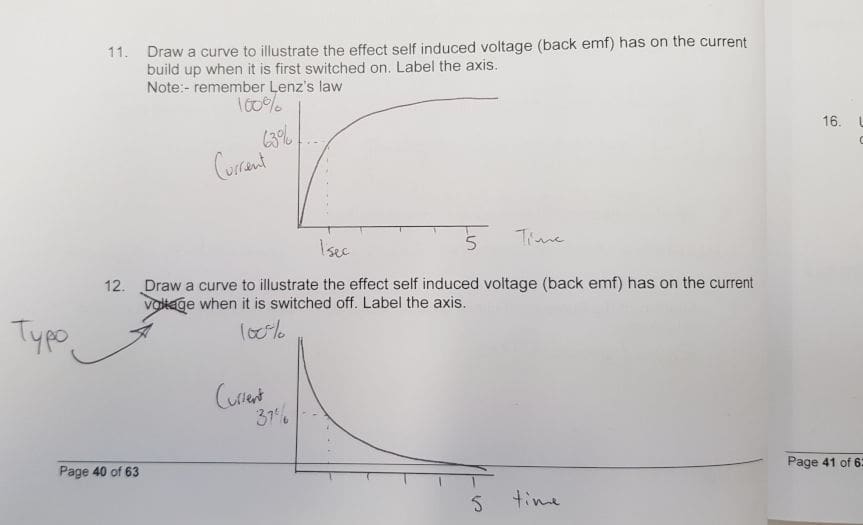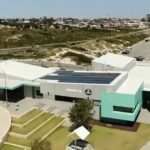The Sorry State Of Electrician Training In Australia

JIS screws are invariably ruined by people who don’t know they exist.
Despite 15 years in solar, my experience as an apprentice isn’t as distant as you might think.
My journey has included two full electrical apprenticeships and a brief detour for electrical engineering. The first private training organisation I attended, however, left much to be desired with its substandard course material. It was an eye-opener to realise that this “institution” was, in fact, a religious organisation with a training front. This revelation wasn’t explicit until you saw the company home screen where the instructor logged on each morning. His employer was asking him to donate 10% of his wage back to them, they call it tithing.
They Were Simply Getting Things Wrong
As an example, they had a New Zealander mispronouncing “spline” as “spleen” drive, misdescribing what was actually an obsolete XZN screwdriver. They laughably failed to even mention nor differentiate between Phillips, Pozidrive, and JIS screwdrivers. After pointing this out and sending the instructor a Wikipedia link. I got a chirpy response.
“Oh, we’ve been teaching this for a couple of years now, good pickup!” said the instructor.
It was painful knowing that fact. The only saving grace was the organisation’s agility in editing their course material immediately. What truly distressed me, however, were the course books written by non-electricians. They attempted to describe fundamental electrical concepts, and without the accompanying diagrams, even I would have been completely lost. For instance, they asked:
“What is the current voltage with the switch closed?”
I have simplified the wording in the article, but this is an actual example.
The Wucking Fot?
There’s no such thing as a “current voltage” like there are “current affairs” shows on TV. Words like ‘current’ and ‘voltage’ have specific, distinct meanings. They’re part of the technical language electricians use to communicate complex ideas. The question should have been phrased as:
“What is the voltage across these points when the circuit is closed”
Or maybe use a different word :
“When the switch is closed, what voltage will be present?”
I was relieved when the training company, daunted by the potential of failing RTO auditing, ceased offering electrical training after my first year. My subsequent experience at TAFE made me realise it was sadly a shadow of what it had been 25 years earlier.
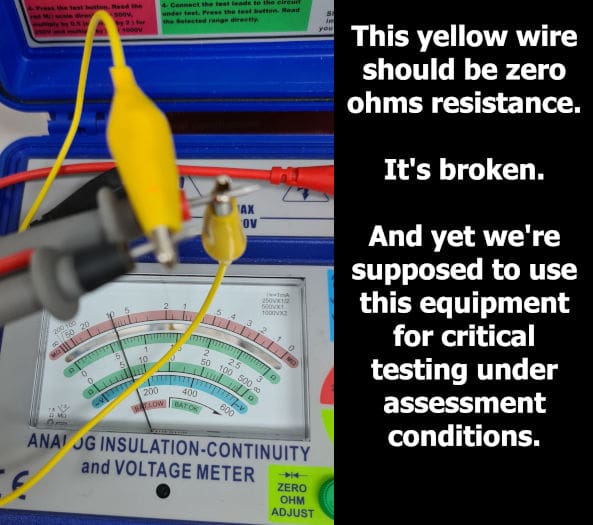
Imagine sitting your year 12 exams and being given a broken calculator. Thanks, TAFE
What’s It Got To Do With Anything Currently?
This experience sticks with me, especially as a native English speaker and self-proclaimed grammar nazi. It resonated because of the classmates at the back of the room who spoke English as a second language. Miscommunications like this could completely throw them off, and I often clarified points with the tutor to ensure everyone understood the concepts that the textbook failed to explain adequately.
Now, as I ponder those classmates possibly working in solar energy, I wonder how they navigate the often inadequate current specification of inverters. This topic alone warrants a whole separate article.
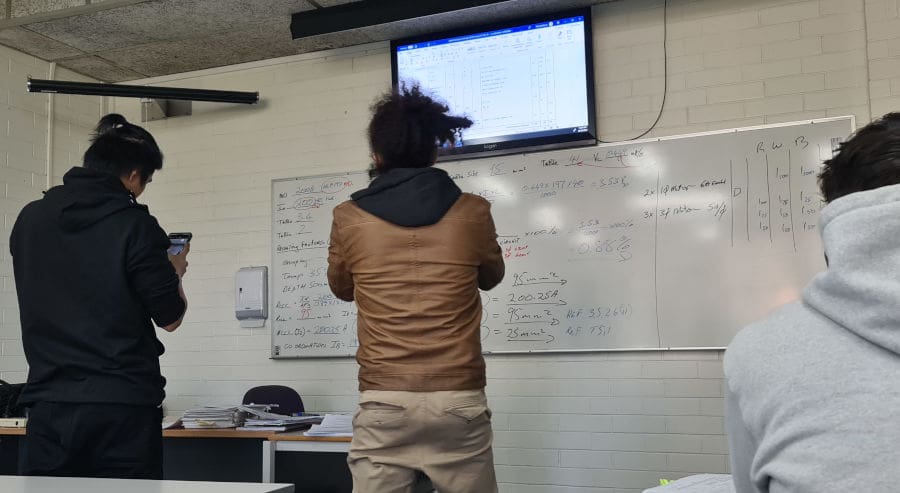
TAFE “big screen” that isn’t, and glare from all the lights means you’re forced to get up and photograph the whiteboard with your phone.
Being A Pedant Pays Off
When I pursued additional courses to add solar to my qualifications, I couldn’t resist marking the assessment books with a red pen, highlighting the errors in the questions. As the son of two teachers, this was almost second nature, albeit a surefire way to irk the trainers. To my surprise, they welcomed the feedback and even offered me a part-time job. Full credit to the better kind of private training organisation.
The CEC Is Our Nemesis
I encountered further challenges with solar accreditations. As an auto electrician, I’m well-versed in DC systems and complex circuits. 12-15 years ago, I was on the roof installing panels while also teaching and reassuring the solar-qualified sparky that what he was wiring up was correct. He hadn’t exercised that part of his brain since leaving trade school because most domestic electrical revolves around one number, 230Vac, then picking the right breaker for the cable.
However, when I applied to the CEC, I faced a setback. They initially denied my application because, according to them, a licence in training wasn’t a real licence. The government would beg to differ, the card I carried said “any electrical work” After a few emails they clarified that they’d made the rule up and they should probably edit their own website to make that clear. No Apprentices
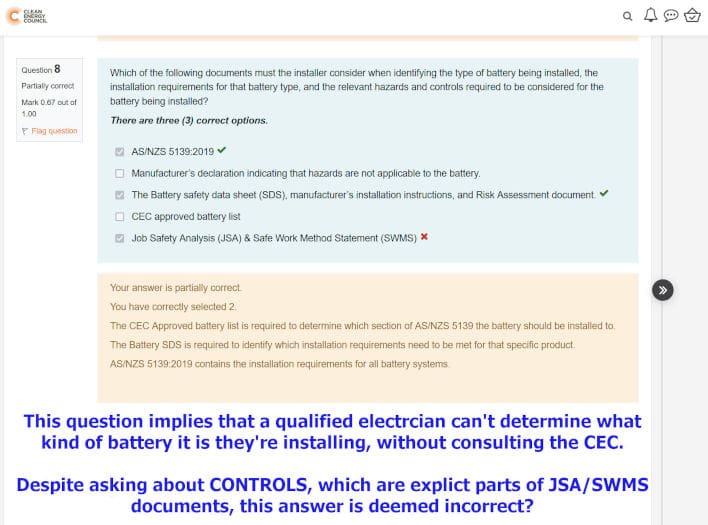
After spending $2500 plus a week off work doing battery training, the CEC still want to quiz you just because they can.
So what about doing the solar training as an elective at the end of the apprenticeship, as an alternative to communications cabling? That was a commonly available option, but despite doing the academic work while holding a license in training, the CEC couldn’t bring themselves to offer the qualification. They weren’t about to answer any embarrassing questions about it either.
So, for me, a 4-year apprenticeship was made into six years by Covid, the CEC and TAFE incompetence.
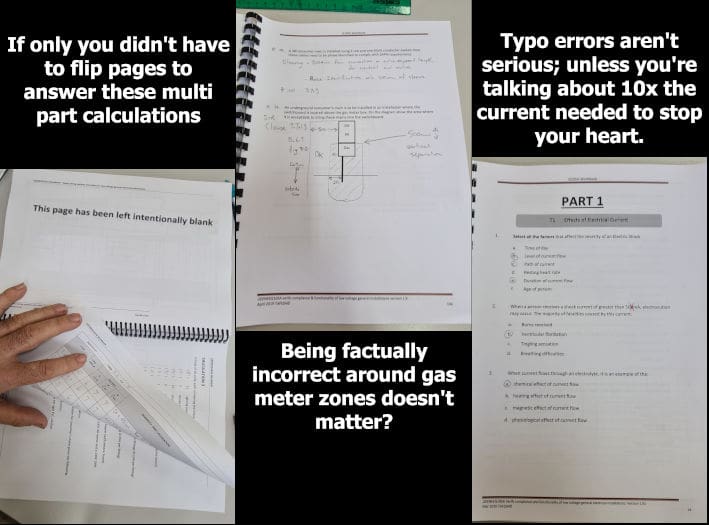
TAFE have students studying graphic design and pre-press layouts, yet they can’t even get a work book straight.
I Could Rant For Days
The standards of education I’ve seen first-hand at TAFE are a bit dismal. Here we are a first world, expensive labour country, head long into the information age. Despite the incredible legacy of public education and public utilities our training seems to vary between ordinary and just rubbish.
The only stand up barney I have ever had with a teacher was over assessment in a lighting subject that was barely 18 hours. The sparse 28 page work book had one solitary mention of LEDs (which have now replaced everything in lighting) TAFE later admitted they needed to update it a bit. I’ll argue that if it was written in 2013(?) it was already horribly out of date.
My boss at the time put it succinctly by saying;
“Oh good, they’re teaching you about steam engines in the digital age”
They didn’t even cover colour temperature properly, I literally learnt more about that from my dentist, because the ADA mandates he has to replace fluorescent tubes every eight months. If he doesn’t get the colour temperature right, your white teeth won’t be colour-matched to your fillings.
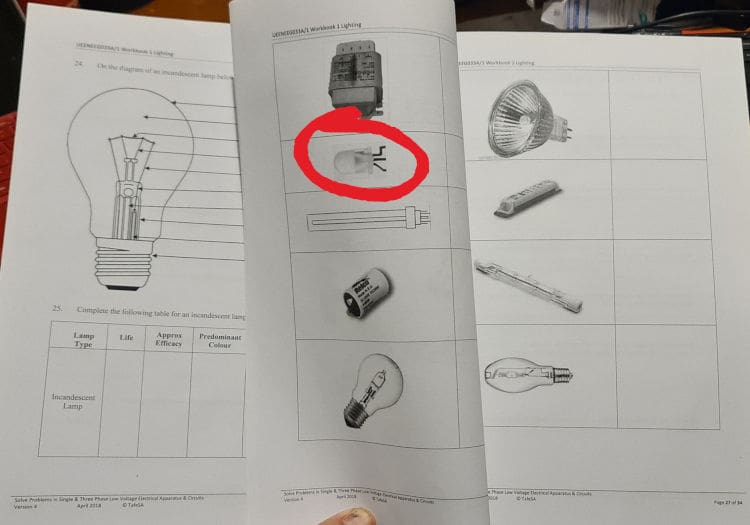
Circled in red is the only mention of LEDs. In fact you can see the whole book is weighty enough I think my 6 year old could pass the subject.
We Need To Spend More On Decent Education
That means better TAFE courses and teachers and better standards for private providers.
Public authorities like the Electricity Trust of South Australia & Telecom used to have an intake. They would suck up 400 apprentices each, every year taking on a heap of school leavers on general principle. On paper, it made these utilities “inefficient”, and much was made of that when politicians sold us the lies of privatisation.
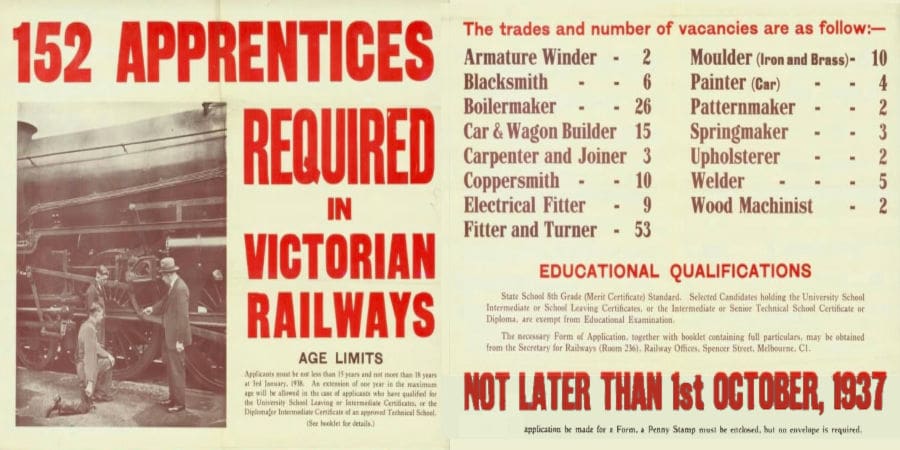
ETSA was a fully vertically integrated generator, transmission operator, distributor and retailer. Not only did they run the technical regulator (to police licenced electricians), but they also had ETSA works depots co-located with TAFE.
Every apprentice, public or private, got training from the people running the entire electricity system.
While there is a place for private training, what I experienced first-hand isn’t sustainable. The head of a TAFE campus was trying to run the school, and teach classes and mark assessments as well. He needed a personal assistant and another teacher (not a secretary in a regional town 300km away). Instead, the wheels just fell off all the time.
The delay to my qualification cost a great deal in terms of pay and personal wellbeing, but it costs us all when people can’t get good training in a timely fashion.
Original Source: https://www.solarquotes.com.au/blog/electrician-training/



